B0041VYHGW EBOK (94 page)
Authors: David Bordwell,Kristin Thompson

Graphic and rhythmic relationships are present in the editing of any film. Spatial and temporal relationships may be irrelevant to the editing of films using abstract form (
p. 368
), but they are present in the editing of films built out of nonabstract images (that is, the great majority of motion pictures). Let’s trace the range of choice and control in each area.
The four shots from
The Birds
may be considered purely as graphic configurations, as patterns of light and dark, line and shape, volumes and depths, movement and stasis—
independent of
the shots’ relation to the time and space of the story. For instance, Hitchcock did not drastically alter the overall brightness from shot to shot, because the scene takes place during the day. But if the scene had been set at night, he could have cut from the uniformly lit second shot in the bar (
6.6
, Melanie turning to the window) to a shot of the gas station swathed in darkness. Moreover, Hitchcock usually keeps the most important part of the composition roughly in the center of the frame. (Compare Melanie’s position in the frame with that of the gas station in
6.7
.) He could, however, have cut from a shot in which Melanie was in, say, upper frame left to a shot locating the gas station in the lower right of the frame.
Hitchcock also plays off certain color differences. Melanie’s hair and outfit make her a predominantly yellow and green figure, whereas the shot of the gas station is dominated by drab grays set off by touches of red in the gas pumps. Alternatively, Hitchcock could have cut from Melanie to another figure composed of similar colors. Furthermore, the movement in Melanie’s shot—her turning to the window—does not blend into the movements of either the attendant or the gull in the next shot, but Hitchcock could have echoed Melanie’s movement in speed, direction, or frame placement by movement in the next shot.
In short, editing together any two shots permits the interaction, through similarity and difference, of the
purely pictorial
qualities of those two shots. The four aspects of mise-en-scene (lighting, setting, costume, and the behavior of the figures in space and time) and most cinematographic qualities (photography, framing, and camera mobility) all furnish potential graphic elements. Thus every shot provides possibilities for purely graphic editing, and every cut creates some sort of graphic relationship between two shots.
Graphics may be edited to achieve smooth continuity or abrupt contrast. The filmmaker may link shots by graphic similarities, thus making a
graphic match
. Shapes, colors, overall composition, or movement in shot A may be picked up in the composition of shot B. A minimal instance is the cut that joins the first two shots of David Byrne’s
True Stories
(
6.9
,
6.10
).
More dynamic graphic matches appear in Akira Kurosawa’s
Seven Samurai.
After the samurai have first arrived at the village, an alarm sounds and they race to discover its source. Kurosawa cuts together six shots of different running samurai, which he dynamically matches by means of composition, lighting, setting, figure movement, and panning camera movement. (We show the first three in
6.11
–
6.13
.)
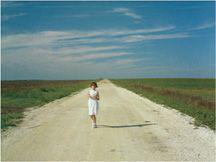
6.9 A shot from
True Stories
showing the Texas horizon midway up the frame is graphically matched …
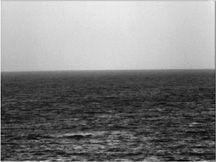
6.10 … with a shot where the waterline of ancient seas is in the same position.
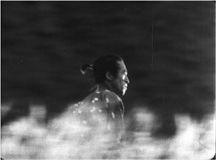
6.11
Seven Samurai.

6.12
Seven Samurai.
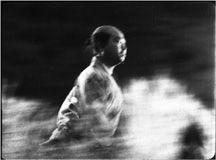
6.13
Seven Samurai.
Filmmakers often call attention to graphic matches at transitional moments
(
6.14
–
6.16
).
Such precise graphic matching is relatively rare. Still, as in the
Birds
shots, an approximate graphic continuity from shot A to shot B is typical of most narrative cinema. The director will usually strive to keep the center of interest roughly constant across the cut, to maintain the overall lighting level, and to avoid strong color clashes from shot to shot. In Juzo Itami’s
Tampopo,
an aspiring cook is trying to learn the secret of good noodles, and she questions a successful cook. Their confrontation is presented through head-on framings. Alternating shots keep each main character’s face in the right center of each frame
(
6.17
,
6.18
).
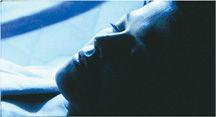
6.14 In
Aliens,
the curved outline of Ripley’s sleeping face …
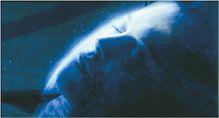
6.15 … is graphically matched by means of a dissolve …

6.16 … to the outline of the earth.
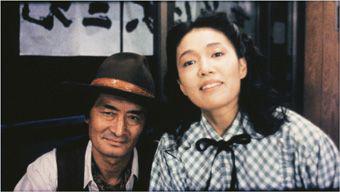
6.17 The woman and her friend, the cowboy truck driver …